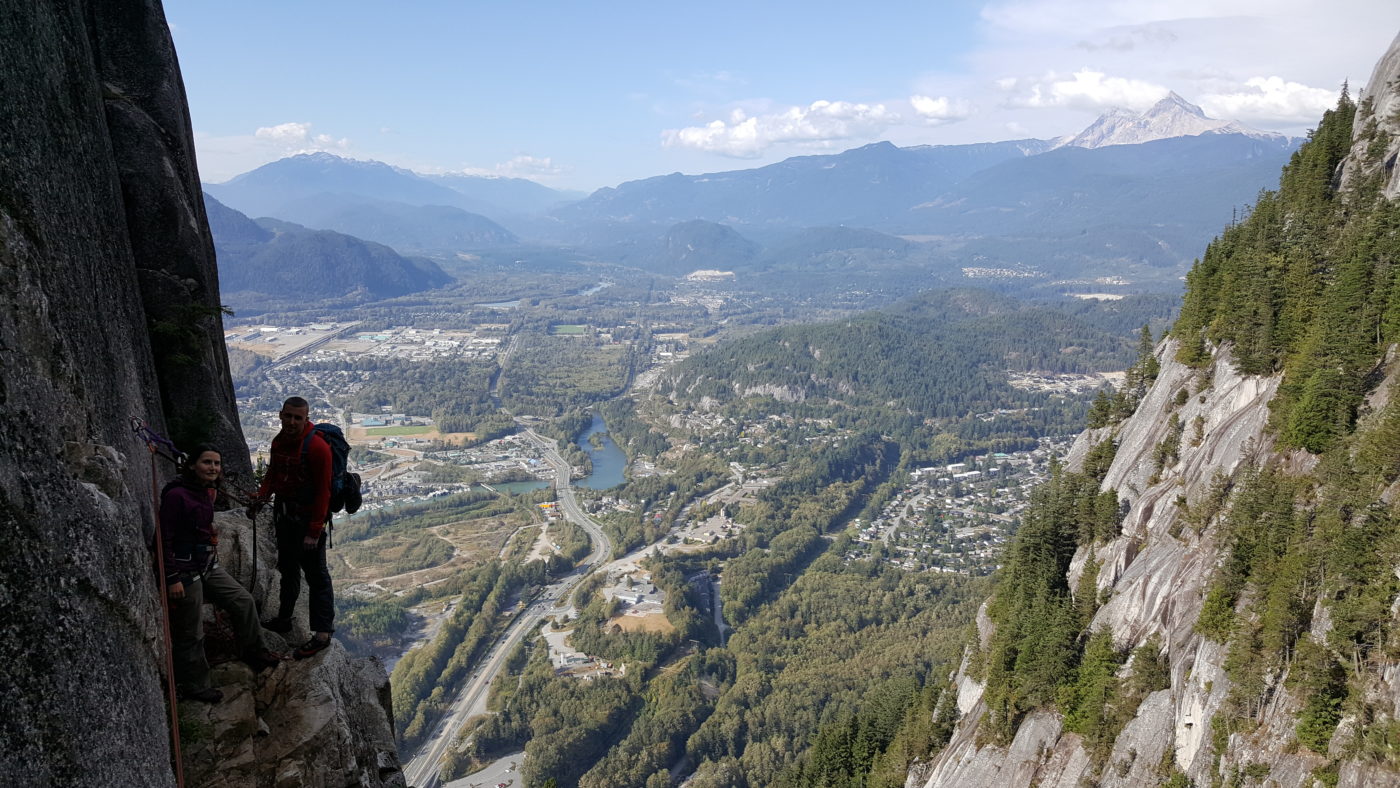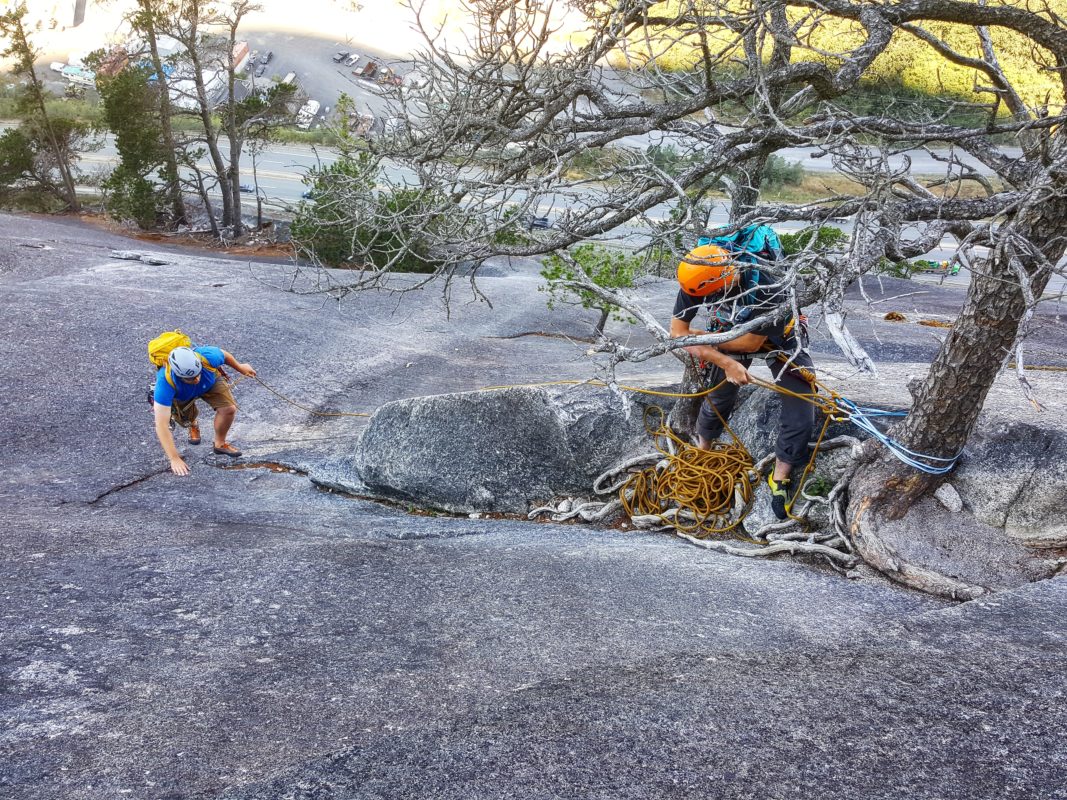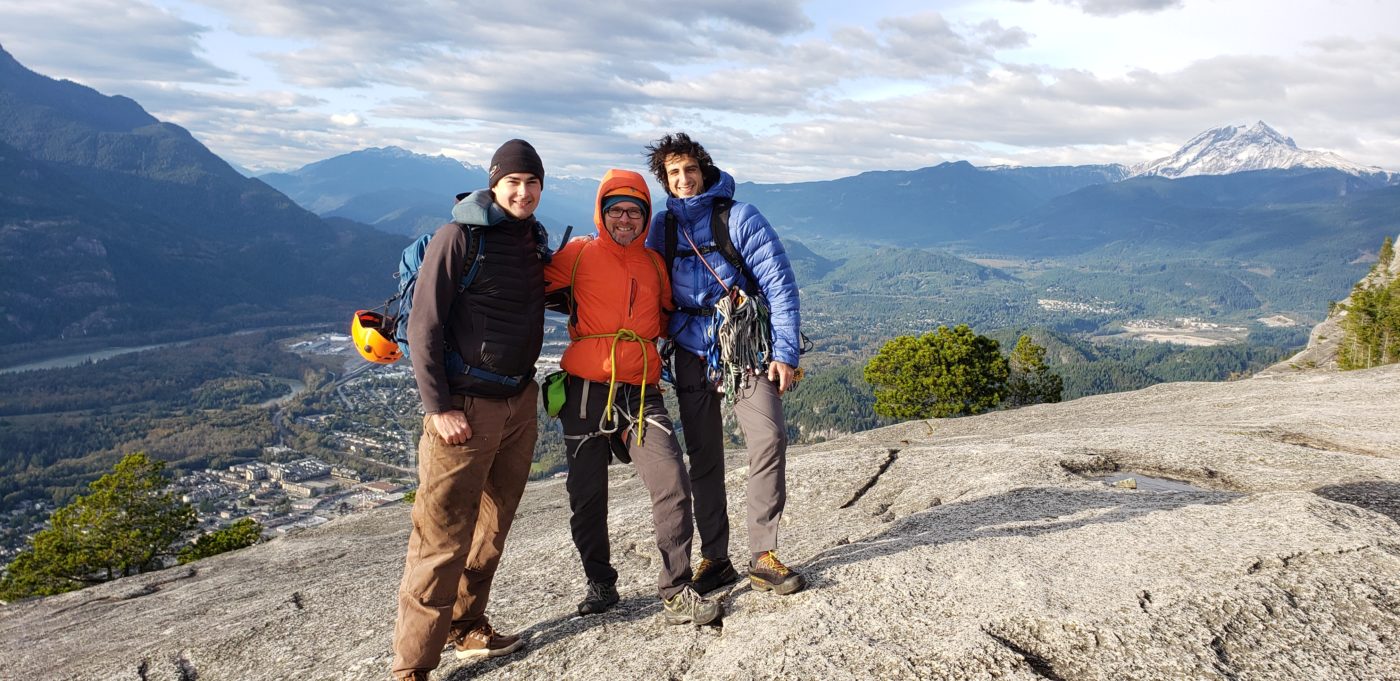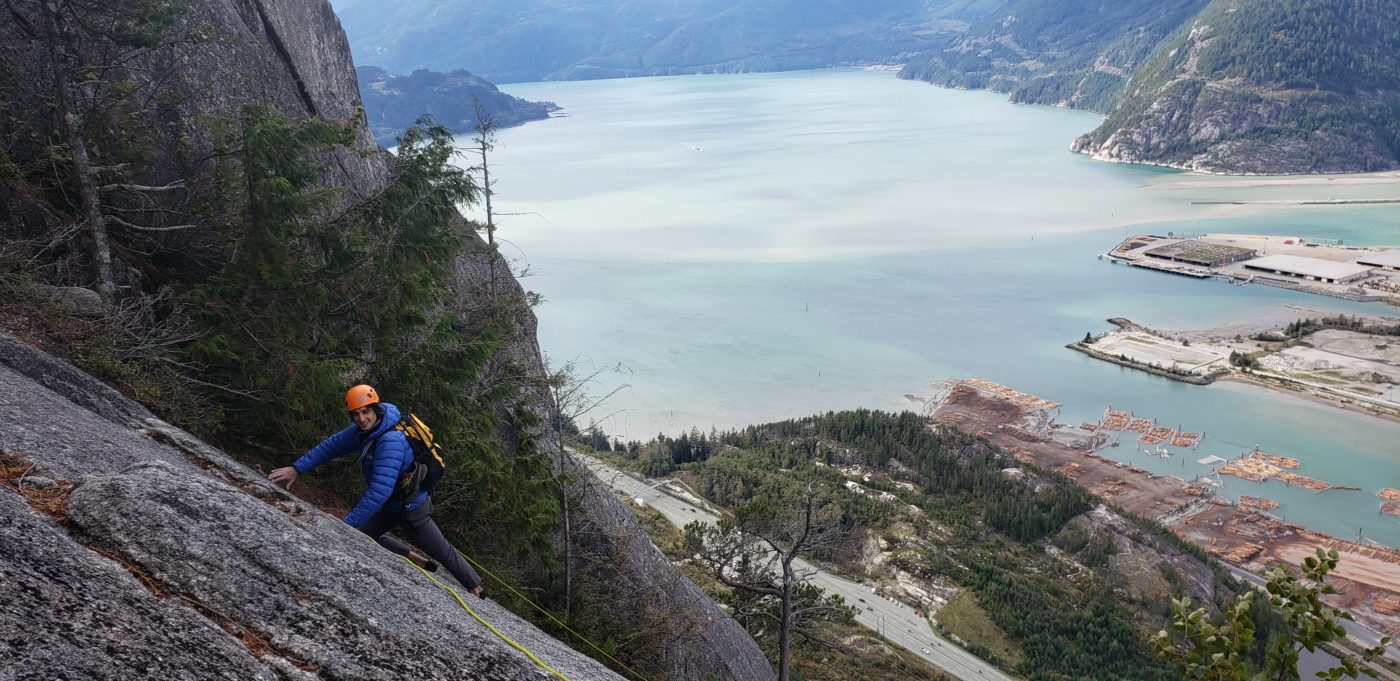Trip Report
Scaling the Chief – one pitch at the time
The Stawamus Chief stands tall and vertically straight above the green-blue waters of Howe Sound. Anyone capable of walking and hiking can make their way up the stairmaster like path on the backside to the top within a reasonable effort. However, someone that would want to scale this granite mastodon from the front side will need ropes, skills, special gear and determination. A climbing team of two or will use a 70m rope, a single rack of Cams #0.1 to #3 (double on yellows), a standard set of wire nuts, lots of slings (doubles and triples) to be used around trees and other land features, a set of quickdraws (about 10, alpine preferably) and the necessary gear for anchors and self-rescue including prusik and pulley. The whole climb should take around 10 hours.

Living and working in Squamish can feel a bit surreal, something out of a dream and the rewards are immeasurable when thinking of any alternatives. Outflows and inflows are the common theme when describing the winds around here and often the strong gusts can be intimidating when making delicate moves on the glacier polished granite high up above the ground. Sometimes the rain settles in for a while, when moisture from the pacific reminds us that we live on the west coast. The landscape changes drastically when you gain elevation, as you get closer to the top, views of Sky Pilot, Garibaldi and other local rock massifs appear, sculpting the skyline with volcanoes and mountains, reminiscing from a violent era a long long time ago. The climbing around Squamish is diverse and high quality, it serves as a wide training ground for anyone wanting to improve their climbing skills or work towards bigger projects and objectives. Rock Climbing has certainly gained popularity in the past decade with more people lacing up the rubber shoes and learning the skills to climb the rock with a local guide or with a friend.

They’re many different routes that will take you to the top, varying in difficulty and length. The most popular is the classic Squamish Buttress, the addition of a moderate alternative (Butt Light) variation high near the top, helped keep the grade no harder than 5.9 and has attracted many to the idea of climbing the chief from ground to top.

For example, starting at the base of the “Lower Apron” climbing 3 pitches of moderate difficulty (The Rambles 5.8) will bring you to the base of the “South Apron” where many popular routes are located. One of the easiest is Banana peel 5.7, a route that sways its way up the long, low angled slab of granite painted with sparse vegetation highly visible from the highway in Squamish. Slab climbing can be very unnerving for new climbers discovering the benefits of top dollar rubber that justify the high price of the shoes they’re wearing. The climbing has long run outs with little protection other than twisted twigs and trees including birch, cedar, pine, and hemlock growing through the few cracks fissuring the face. One will encounter a random bolt helping with route finding and mental peace. Thankfully, the climbing isn’t too hard, except for sections that have been polished by either foot traffic or by a process of glacial erosion thousands of years ago making for some exciting sequence of delicate moves. Anchors are often made of large boulders, trees, gear in cracks and sometimes bolts and chains. This variation up the Apron was established by early pioneers back in 1965, at a time when climbing wasn’t very well known and equipment was no more than a rope tied tight around your body, with the lack of intermediate protection points, the maxim of the day was: “the leader must not fall”. Climbers will find the difficulties easing higher as they go to finally reach a broad ledge. It is possible for strong climbers with a 70m rope to link up the route in 6 long pitches, while being careful of rope drag. Broadway ledge is a long break in the vertical rock face giving easy access across the mid portion of the buttress, left to right connecting the south gully to the Apron descent ramp. This is a great spot for climbers to take a lunch break and consider their options before venturing further up the mountain. It’s also the ending place of many Apron routes, making for a great easy half day adventure.

From here, the excitement begins and the simple way to access the upper part of the Squamish buttress is to climb the Boomstick crack 5.7, an exfoliating flake running diagonally, and trending left up a short wall. The first move involves a dyno/mantel sequence, before traversing along this flake, disconnected from the main wall that looks like a wave of granite and provides steps and gear placements for the climbers. A long lead past a few rugged bonsai pine trees will lead you into a small forest. This is where some parties will unrope and some will just shorten the rope between them to head up an easy 10min scramble through an open hanging forest with great views of the valley below with good photo ops and lunch spots before reaching the start of the upper section of the chief. Many climbers choose to go up a small roof passing a bolt and a stretchy 5.8 move over to easier terrain. A few more leads on some easier short 5.5-5.7 moves and a squeeze through some boulders will take a determined party to the final part of the journey.

The Butt Light is a ramp system only accessible by climbing a short steep crack with powerful moves including some layback/left hip on the wall body position to reach a two bolt 5.9 traverse onto this wide ramp trending up left 5.0 deep inside the south gully. This is one of the best situations along the route, giving a great sense of exposure with long vertical walls all around. Navigating along the ledge can be awkward when deciding to crawl instead of climbing and requires good planning when placing gear to avoid serious rope drag. There is an interesting 5.8 move to get out of a chimney like alcove that involves spinning 180 degrees from connecting your back onto the mountain to facing positive hand jugs as you pass a bolt to a tree belay. The exit is up easy terrain back to the hiking trails, usually under the watch of surprised onlookers. A few summit pictures before descending the hiking trail will usually take a strong team 6-8hours car to car in 19 pitches. We recommend packing lunch, snack bars and a liter of water, carrying one small backpack with a first aid kit, a wind breaker jacket and a cell phone for photos and emergency. Finally, the best place for Après-Climbing is to sit on the patio at the Casino bar and watch the sun go down on the route you just climb. Marvel at this beautiful piece of natural architecture.

About the Writer:
Guillaume is a Local guide with 25 years of experience in the sea to sky region, he likes to spend time between guiding, exploring new terrain and with his family.

